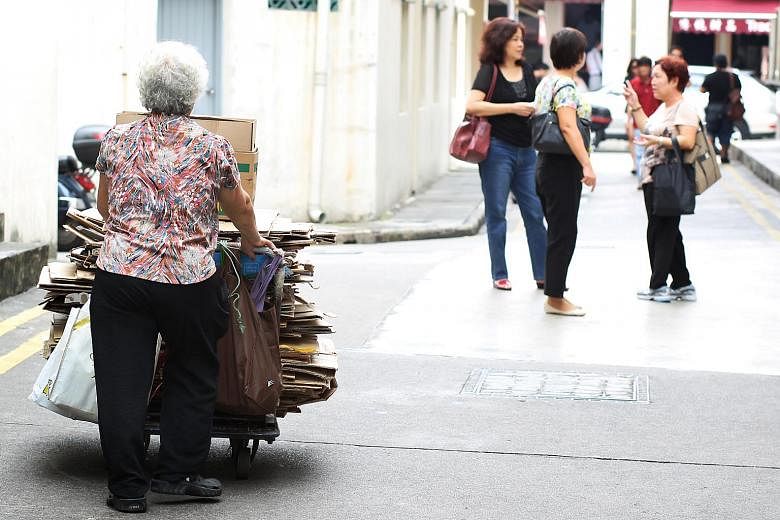The rise of social media is providing the authorities with a fresh way to locate people who are in need of assistance.
Since the Ministry of Social and Family Development (MSF) joined Facebook in 2011, it has been receiving more online alerts. And while some cases were already known to the Government and voluntary welfare agencies, at least one-third is new to the social services.
In 2013 and 2014, MSF received about 300 public queries on its Facebook site, with one in five pertaining to people who may need help.
The rest are questions directed at the ministry, such as where to find the nearest social service office.
Last year, the number of alerts for help increased to 130, out of 250 public queries.
On average, the ministry receives 11 alerts about the needy each month. Alerts can be about people who need financial aid, or alleged child abuse. "We generally acknowledge such alerts within a day... We inform various MSF divisions for follow-up - such as the social service offices, Child Protection Service and the Destitute and Shelter Support Branch," said an MSF spokesman.
In December, MSF completed its network of 24 social service offices which, together with the 43 family service centres, means 95 per cent of the island's needy residents now have access to help within 2km of where they live or work.
Mr Tan Chuan-Jin, Minister for Social and Family Development, told The Sunday Times: "The fact that people are concerned and raising alerts is a good thing. It shows that people do care and would like to help those around them."
But, he said, the public could do more so that the ministry can reach out to the needy more effectively. They should ask for further details and find out more about the person's situation.
"Oftentimes, the information is sketchy and can become a wild goose chase if it's lacking in details," he said.
"There were also instances where persons in need are already being assisted by our social workers but chose not to highlight the fact, thus giving the impression that they are left to fend for themselves."
Last October, for example, a post about an elderly man in Ang Mo Kio who asked a passer-by for food had almost 6,000 shares and more than 25,000 likes. But the case turned out to be a false alarm.
"Sometimes, these individuals are managing on their own and may not desire assistance. For those who are already being assisted, their situations may have changed over time and their being flagged can help us review the assistance required," said the minister.
To help the ministry better do its work, members of the public who spot those in need of assistance can help by:
•Advising the person in need to approach the Social Service Office for help. The person can call the ComCare Hotline on 1800-222-0000 to find the Social Service Office closest to him/her; or
•Obtaining his/her personal details (name, NRIC, address and contact details) and furnishing these to the ComCare Hotline, or private messaging MSF Facebook for follow-up by the Social Service Office; or
•Referring him/her directly to the nearest Social Service Office (www.msf.gov.sg/ssolocator)


